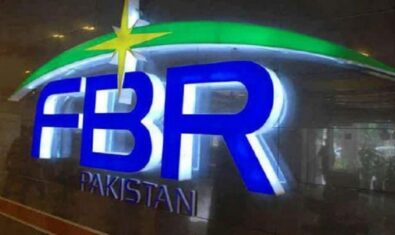The Securities and Exchange Commission of Pakistan (SECP) has extended the time period up to April 30, 2021, for securities brokers, futures brokers, insurance companies, Takaful operators, the Non-Banking Finance Companies (NBFCs), and Modarabas to file annual risk assessment and control/compliance assessment framework under the anti-money laundering regime.
The SECP has issued SRO 197 (I)/2021 here on Wednesday under the Anti- Money Laundering Act, 2010 to amend its earlier notification S.R.O.920 (I)/2020, dated 28th September 2020.
The SECP issued instructions to the regulated entities, i.e., securities brokers, futures brokers, insurance companies, Takaful operators, the NBFCs, and Modarabas, here on Wednesday to follow new reporting requirements prescribed by the SECP.
The SECP, hereby, directs all the regulated entities to comply with the following reporting requirements, and submit information in the manner prescribed to the respective supervisory departments of the commission, in consonance with the requirements of the regulations and guidelines.
The annual risk assessment and control/compliance assessment framework based on data and information as of June 30, to be filed by July 31 of each financial year, starting from the date of notification of this directive, and as instructed from time to time by the Commission.
However, the date has been extended to April 31st of the current financial year.
The SECP has also directed securities brokers, futures brokers, insurance companies, Takaful operators, Non-Banking Finance Companies (NBFCs), and Modarabas, to ensure implementation of Targeted Financial Sanctions (TFS) on customers/suspected account holders of the regulated entities, which owe money, assets or property of the designated or proscribed persons under the United Nations (Security Council) Act, 1948 and Anti-Terrorism Act, 1997.
They said that the regulated entities should undertake and submit their internal annual risk assessment which should be aligned with the risks identified in the latest National Risk Assessment of the country and cover the process adopted for risk identification.
The risk assessment methodology should cover the risk emanating from customers, products, geography and delivery channels, elaborate risk tolerance level and assess residual risk after implementation of mitigation measures.
ALSO READ
SECP Asks Brokers, Insurers and NBFC’s to Strictly Monitor Transactions of Their Customers
Regulated Entities are encouraged to use the template given in Annex 1 to the Guidelines for reference, but may choose their own risk assessment methodology that best suits or represents their business covering the aforementioned risks, in light of the AML Act, 2010 and the Regulations.
The risk assessment report should be reviewed and approved by the board of directors of the Regulated Entities and shall be signed by the chief executive officer/company secretary.
Compliance Assessment Checklist: Regulated Entities should submit their annual compliance assessment checklist to demonstrate adequacy and effectiveness of the AML/CFT compliance framework in light of the Regulations, and are encouraged to use the checklist provided in Annex 2 to the Guidelines for this purpose.
The SECP has directed the regulated entities to raise “red flags” to identify suspected persons or customers. It has issued separate “red flags” that specifically relate to non-banking financial institutions (NBFIs).
The SECP has also issued “red flags” based on the behavior of an account holder associated with proscribed individuals or entities.
The commission has issued guidelines for implementation of the Anti-Money Laundering/Counter Financing of Terrorism (“AML/CFT”) framework as contained in the regulations for assistance and guidance of regulated entities.
These guidelines supplement the regulations and the AML/CFT regime by clarifying and explaining the general requirements of the AML Law to help Regulated Entity (RP) in applying AML/CFT measures, developing an effective AML/CFT risk assessment and compliance framework suitable/compatible to their business, and in particular, in detecting and reporting suspicious activities.
The guidelines also contain guidance for preparing the AML/CFT Risk Assessment; AML/CFT Compliance Assessment Checklist; ML/TF warning signs/red flags; proliferation financing warning signs/red alerts.
The AML Act requires all reporting entities to ensure implementation of TFS of freezing and prohibition obligations in relation to the money, assets, or property of the designated or proscribed persons under the United Nations (Security Council) Act, 1948, and under the Anti-Terrorism Act, 1997, the SECP directive said.
The SECP directed that the regulated entities should undertake and submit their internal annual risk assessment, which should be aligned with the risks identified in the latest National Risk Assessment of the country, and cover the process adopted for risk identification.





















